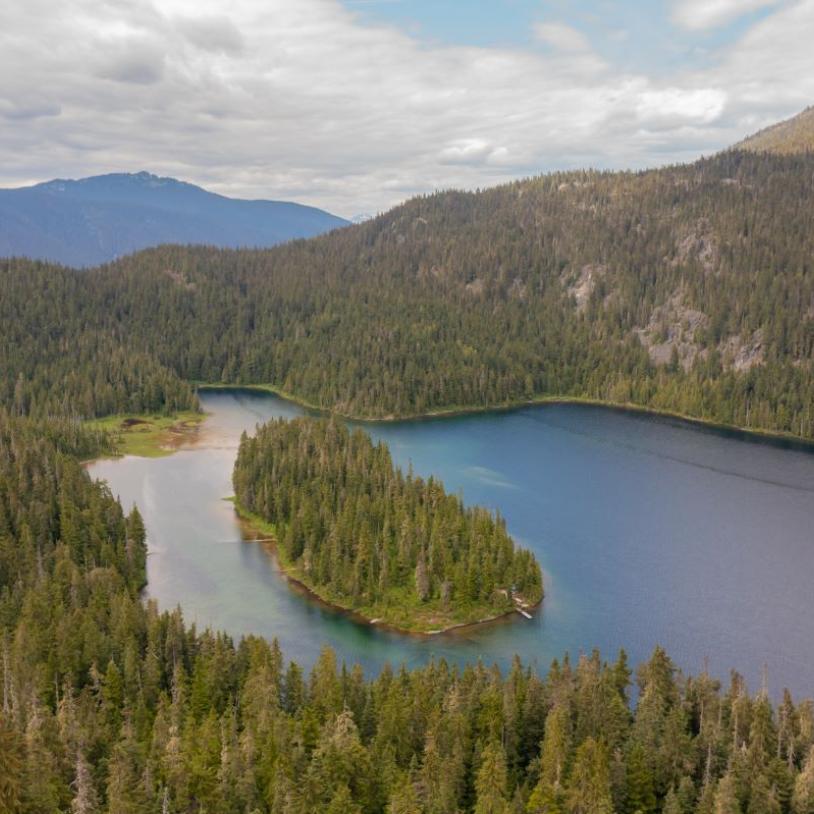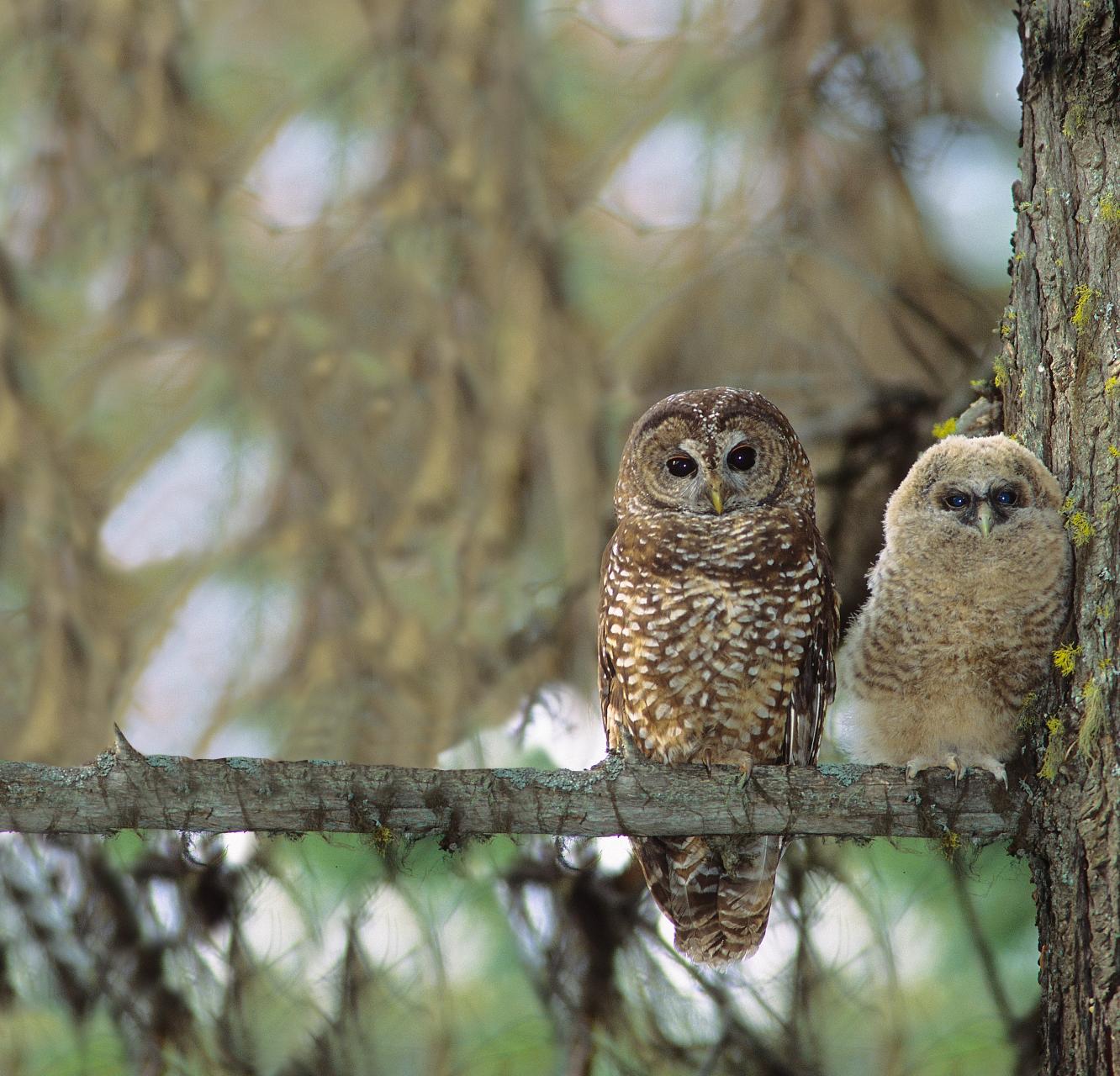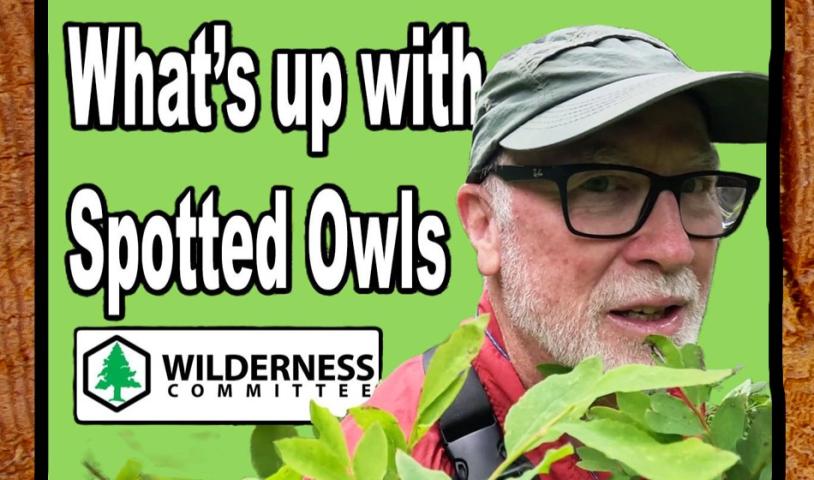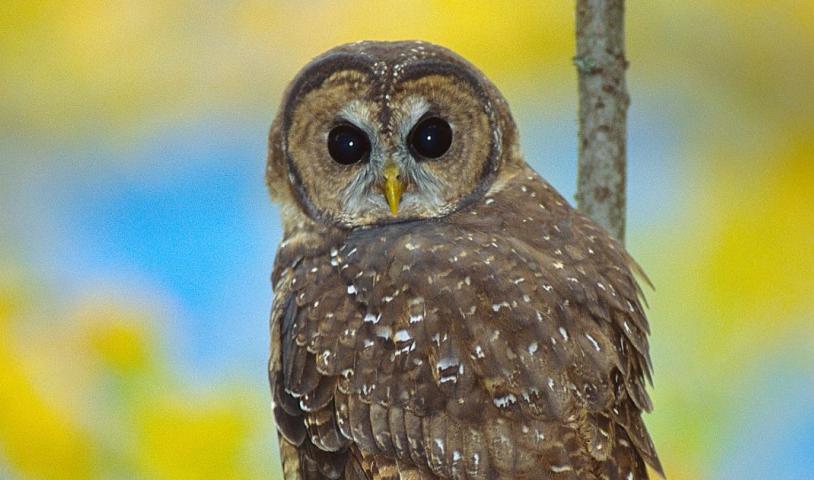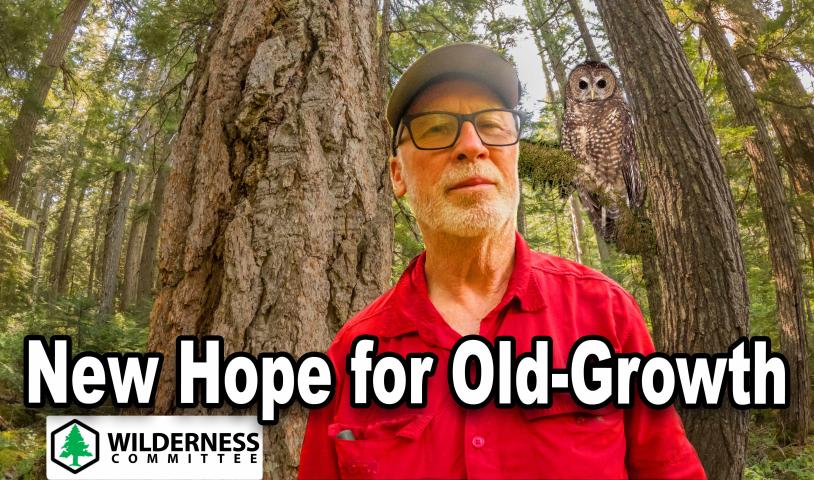Fixing Things Right ‑ Wild Times
Tuesday, November 14, 2006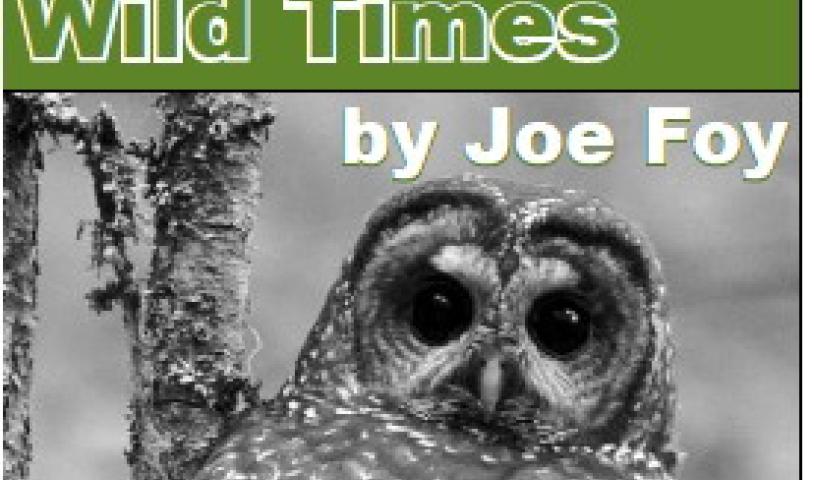
November 15th, 2006 - Read Joe Foy's Wild Times column in the Watershed Sentinel as he looks at what it will take to fix a forest.
By Joe Foy
We were looking for signs of fresh logging in spotted owl habitat west of Lillooet.
The pick-up truck began to fishtail kicking up dust. Somewhere in the back I could hear a whump whump whump sound.
“Flat” I said to Andy Miller who was riding shotgun.
Andy, who is the Western Canada Wilderness Committee’s staff biologist, hopped out of the truck as soon as it was stopped and started looking at tires. Sure enough, the right rear was flat.
I wiggled under the truck and set the jack in place. “Hey Joe – its only flat on the bottom,” quipped Andy. Then, when Andy had jacked up the truck enough so that the tire had cleared the road and regained its round shape, Andy joked “Hey Joe – the tire looks fine now!”
Andy’s flat tire jokes had got me thinking about the crazy way the BC government has been trying to “fix” problems with endangered species like the spotted owl. For the government it’s all about how things look – not about if they are actually fixed.
Twenty years ago Northern spotted owls were officially listed as an Endangered Species in Canada. At the time the problem was seen to be pretty simple. Too much old growth forests had been cut down throughout the owl’s Canadian range, which is southwest BC. This had caused the owl population to decline from an estimated 500 pairs before commercial logging had commenced to about 50 pairs.
The fix seemed pretty simple too. If the BC government protected what remained of the spotted owl’s old growth forest habitat, and protected some second growth forests too so that in time the trees could regrow to old growth, then maybe there would come a day when the old growth forest would be fixed and the owl and other creatures that live in it could survive.
It took a while, but by 1993 a team of biologists set up by the BC and Canadian governments had come up with a plan. They had mapped out a couple of dozen Spotted Owl conservation Areas (SOCAs). These were large areas of forest scattered across the landscape from Squamish to Hope to Lillooet. They totalled several hundred thousand hectares of old growth and second growth forests. The biologists wanted the SOCAs put off limits to logging. It was beginning to look as if the broken old growth forest of the owls might get fixed.
Then timber companies and the loggers’ union (IWA) began to get wind of the plan to fix southwest BC’s broken forest by banning logging in the SOCAs – and they didn’t like it one bit.
So it was that when Premier Mike Harcourt announced in June of 1995 what he was going to do about the fate of the spotted owl, he’d already had an earful from the timber industry and the IWA.
Harcourt proudly announced that the SOCAs would stay in place – but that logging would be allowed in all of them, with a slightly reduced harvest, thereby saving logging jobs and spotted owls. To some, Harcourt’s 1995 solution looked sort of OK on the surface. I mean, who wouldn’t want to save loggers’ jobs and spotted owls at the same time? But history has shown that Harcourt’s plan worked about as well as a tire with no air and a big hole in it – even if it did look kind of round.
Since Harcourt’s 1995 “win win” solution, about 3,000 hectares of spotted owl habitat have been logged each and every year.
Today there are less than 20 spotted owls remaining in the tattered old growth forests of southwest BC, and their numbers are declining. Forestry jobs have dropped too because of past over-logging, increasing mechanization and skyrocketing raw log exports.
Panicked by the thought that the Canadian government might at some point step in and order the protection of owl habitat because of the declining population, the BC government
finally moved this summer to place a handful of small areas around a few of the remaining owls off limits to logging. The areas are so small and scattered it’s clear that Victoria is still more concerned with appearances than in actually fixing the old growth forest.
The fix required is the same as it was 20 years back. There needs to be a stop to logging in the remaining old growth forest and some of the second growth forest needs to be set aside too so it can re-grow to old growth.
And we better get it fixed quick too – before all four wheels come off and we hit the weeds real bad. Which means before we get known as the place that logs its endangered species to death. A place no one on Earth wants to buy extinction lumber from.
Joe Foy is Campaign Director for the Wilderness Committee, Canada’s largest citizen-funded membership-based wilderness preservation organization.
